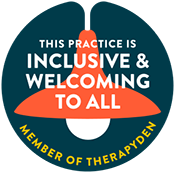EMDR
Eye Movement Desensitization and Reprocessing (EMDR) is a research-backed mindbody therapy designed to help individuals process single-event trauma, complex trauma and more. By engaging both sides of the brain EMDR facilitates the natural healing process, allowing difficult memories to be processed and integrated effectively.
How It Works
Our bodies have an inherent ability to heal. However, when overwhelming experiences occur, this natural process can become disrupted, causing memories to get "stuck" in the nervous system. EMDR uses bilateral stimulation—such as eye movements or tapping—to reactivate the brain’s processing system, helping clients move through unresolved memories with greater ease. You will not forget the memory happened, but rather you will have a healthier and less reactive relationship to the memory and what you believe the event means about you and the world.
While EMDR follows a structured protocol, it is highly adaptable and tailored to each client’s specific needs. Unlike traditional talk therapy, EMDR can involve minimal verbal processing, which many clients find relieving and effective.
How Is EMDR Different from Talk Therapy?
Traditional talk therapy engages the thinking brain (cognitive processes) to explore feelings, while EMDR works on both cognitive and somatic (body-based) levels to target symptoms at their root. Rather than just discussing distressing experiences, EMDR shifts how they are stored in the brain, leading to lasting relief and transformation.
Clients who have undergone years of talk therapy often report that EMDR allows them to process deeper layers of trauma in ways that talking alone never could.
Interested in scheduling a 15 minute consultation to see if we’re a good fit?
Fill out the form below.
Please note I only see clients remotely.

